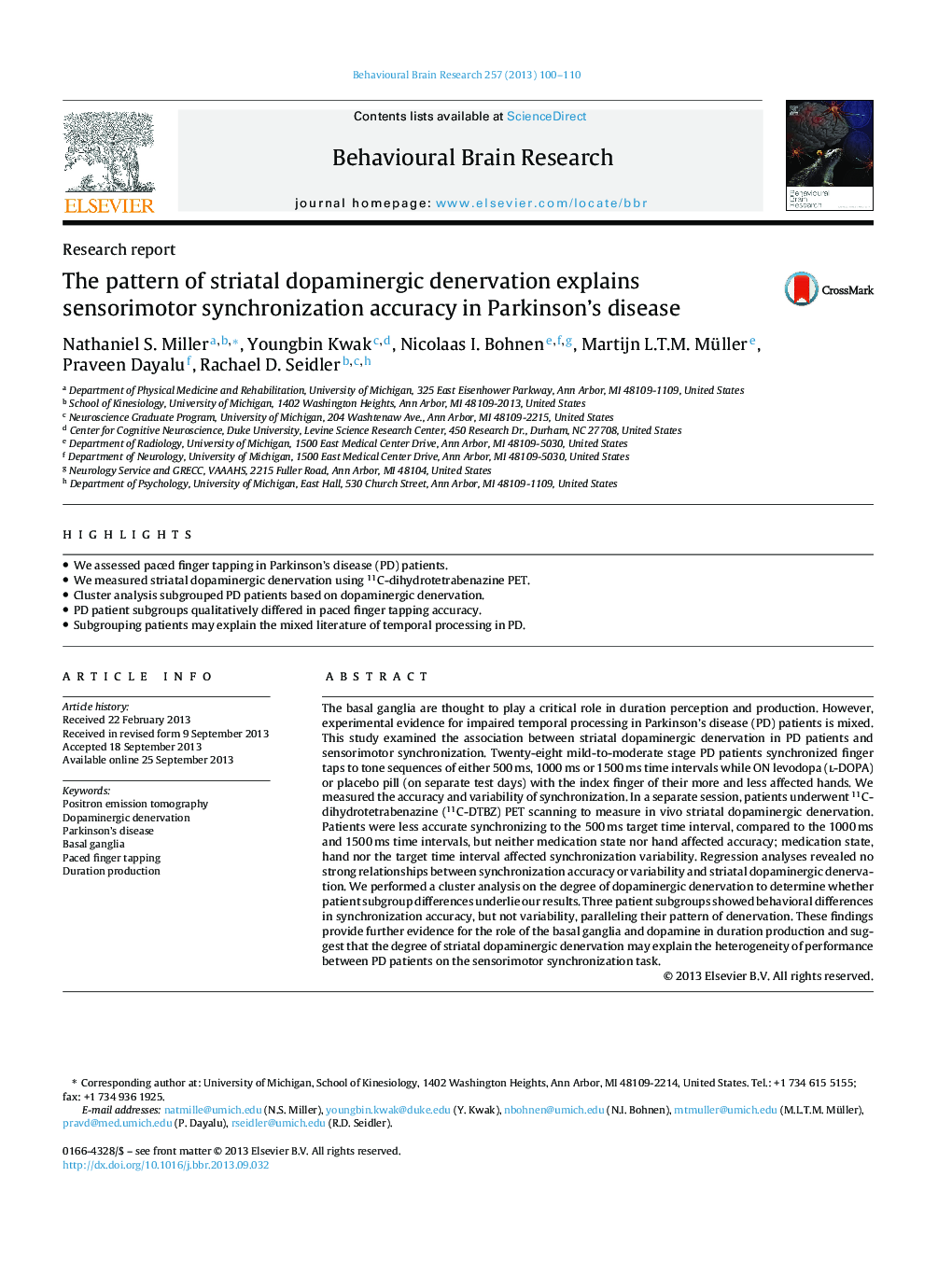| Article ID | Journal | Published Year | Pages | File Type |
|---|---|---|---|---|
| 6258490 | Behavioural Brain Research | 2013 | 11 Pages |
â¢We assessed paced finger tapping in Parkinson's disease (PD) patients.â¢We measured striatal dopaminergic denervation using 11C-dihydrotetrabenazine PET.â¢Cluster analysis subgrouped PD patients based on dopaminergic denervation.â¢PD patient subgroups qualitatively differed in paced finger tapping accuracy.â¢Subgrouping patients may explain the mixed literature of temporal processing in PD.
The basal ganglia are thought to play a critical role in duration perception and production. However, experimental evidence for impaired temporal processing in Parkinson's disease (PD) patients is mixed. This study examined the association between striatal dopaminergic denervation in PD patients and sensorimotor synchronization. Twenty-eight mild-to-moderate stage PD patients synchronized finger taps to tone sequences of either 500Â ms, 1000Â ms or 1500Â ms time intervals while ON levodopa (l-DOPA) or placebo pill (on separate test days) with the index finger of their more and less affected hands. We measured the accuracy and variability of synchronization. In a separate session, patients underwent 11C-dihydrotetrabenazine (11C-DTBZ) PET scanning to measure in vivo striatal dopaminergic denervation. Patients were less accurate synchronizing to the 500Â ms target time interval, compared to the 1000Â ms and 1500Â ms time intervals, but neither medication state nor hand affected accuracy; medication state, hand nor the target time interval affected synchronization variability. Regression analyses revealed no strong relationships between synchronization accuracy or variability and striatal dopaminergic denervation. We performed a cluster analysis on the degree of dopaminergic denervation to determine whether patient subgroup differences underlie our results. Three patient subgroups showed behavioral differences in synchronization accuracy, but not variability, paralleling their pattern of denervation. These findings provide further evidence for the role of the basal ganglia and dopamine in duration production and suggest that the degree of striatal dopaminergic denervation may explain the heterogeneity of performance between PD patients on the sensorimotor synchronization task.
